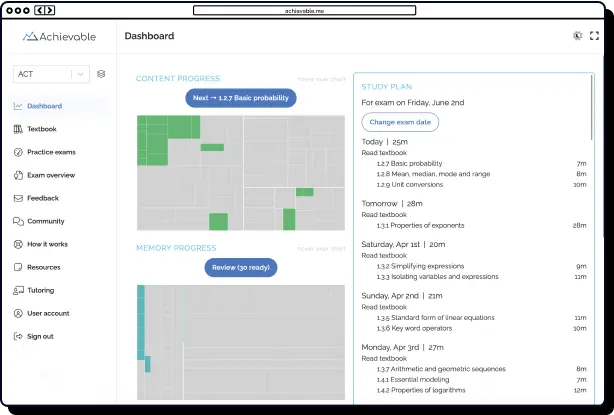
What is periodization training?




Within exercise science and athletics, effective program design goes beyond repetition or increased intensity. Lasting progress in strength and conditioning training relies on deliberate and systematic manipulation of key training variables over time, a methodology known as periodization training. By strategically adjusting workload, intensity, and recovery phases, periodization training enhances adaptation and optimizes athletic performance.
This foundational approach to strength and conditioning training underpins much of the challenging Practical/Applied section of the Certified Strength and Conditioning Specialist (CSCS) certification exam. While periodization training is widely recognized as essential in preparing elite athletes, its principles can be applied to program design for recreational fitness enthusiasts and rehabilitation patients. Building structured strength and conditioning routines is central to being an effective strength and conditioning coach.
Origins and Theory
The concept of periodization draws from the General Adaptation Syndrome (GAS), a key physiological theory proposed by renowned endocrinologist Hans Selye in the 20th century. According to GAS, the body experiences a sequence of three responses to stressors: alarm, resistance, and exhaustion. In strength and conditioning, this model illustrates how systematic exposure to physical stress, coupled with planned recovery, leads to improved athletic performance.
Building on the GAS framework, early sports scientists and many topics covered in CSCS study materials emphasize the deliberate manipulation of training variables. These variables, such as training volume, total workload, intensity, effort, frequency, number of weekly sessions, and rest intervals, are all essential knowledge. By systematically varying these elements across specific training periods, practitioners developed what became known as periodization theory.

The CSCS Practical/Applied section
One of the two sections of the CSCS certification exam is Practical/Applied, the other being Scientific Foundations. The Practical/Applied section is known for its rigor: the CSCS passing score is 70 out of 100, and in 2024, the CSCS pass rate for the Practical/Applied section was less than 50%. This section demands that certification holders understand the science behind different training practices and know how to integrate models into functional program design. Strength and conditioning coaches must have a strong command of periodization cycles, structure, and benefits to train athletes in a safe and constructive manner.
Structure of Periodization: Macro, Meso, and Microcycles
In practical terms, periodization training divides the training timeline into three strategic cycles to systematically optimize athletic performance:
- Macrocycle: This is the longest cycle in periodization training, lasting from six months up to several years, depending on an athlete’s sport and development goals. The macrocycle lays out the overall structure, phase objectives, and progression required to fulfill specific performance outcomes expected.
- Mesocycle: Between the macrocycle and microcycle, the mesocycle usually lasts four to six weeks. Each mesocycle targets a particular adaptation, such as strength gain or muscle hypertrophy. Mesocycles group multiple microcycles together and frequently include a deloading week for strategic recovery, preventing overtraining and overexertion.
- Microcycle: As the shortest phase in periodization training, a microcycle lasts five to ten days and prescribes detailed daily workouts. Each microcycle fine-tunes exercise volume, intensity, and rest intervals, which are important technical elements to master while studying for CSCS certification.
By employing this periodization training structure, athletes and strength coaches can achieve progressive overload without risking chronic fatigue or training setbacks. Adept knowledge of these cycles is crucial for positive training and programming outcomes.
Types of Periodization Models
Several distinct models of periodization form the foundation of effective program design, each tailored to achieve specific physiological outcomes. Mastery of these frameworks is essential for designing results-driven training plans. The three most prominent periodization models are:
Linear Periodization
Linear periodization remains a principal model and is fundamental to sound program design strategies. This traditional approach applies a systematic, gradual increase in training intensity while simultaneously decreasing training volume over extended periods. Athletes transition from high-repetition, moderate-weight sessions at the start of their macrocycle, aligning with early program design protocols, to low-repetition, high-intensity workouts closer to competition. Linear periodization is particularly beneficial for individuals with clear, long-term objectives such as maximizing performance for a major event. Given its rigid structure, it may be less effective for athletes who require sustained, year-round readiness.
Undulating (Non-Linear) Periodization
Undulating periodization, also known as non-linear periodization, is characterized by frequent modifications to training variables within a program design, sometimes altering intensity and volume daily or weekly. For example, one week might incorporate alternating high-volume, moderate-intensity days with sessions of low-volume, high-intensity focused work. This dynamic structure makes undulating periodization ideal when constructing program designs for individuals with unpredictable schedules or multifaceted athletic demands.
Block Periodization
Block periodization serves as an advanced methodology in professional program design. This model divides the training cycle into concentrated blocks, with each phase explicitly targeting a single athletic component (strength, power, endurance, etc.) to foster maximal adaptation. The sequenced-development approach of block periodization means that improvement achieved in one block directly enhances the effectiveness of each phase. Favored in elite performance settings, block periodization remains a go-to strategy for optimizing peak competitive output during a narrow window.
Understanding and implementing these periodization models is vital for any program design plan. They form a key focus area of any comprehensive CSCS study guide and inform strategies used by professionals striving for superior long-term results.

Applications and Advantages
Periodization training has demonstrated empirical evidence of support across various populations, from professional athletes to rehabilitating patients. Advantages include:
- Enhanced Long-Term Progression: Structured variation prevents physical stagnation and facilitates continuous improvement.
- Injury Risk Reduction: By incorporating scheduled recovery phases, periodization mitigates the dangers of overuse injuries.
- Psychological Resilience: Periodized training’s dynamic nature promotes motivation, engagement, and mental well-being by reducing monotony and burnout.
- Goal-Specific Adaptation: Tailored mesocycles allow targeted improvement in qualities such as speed, endurance, coordination, or hypertrophy, depending on the individual’s objective.
Limitations and Considerations
While periodization is widely endorsed in strength and conditioning training, it is not without its limitations. The success of any program design hinges on an accurate assessment of an athlete’s base capacity, a core concept emphasized in the CSCS Practical/Applied section. Additionally, novice individuals or those with inconsistent schedules may find the complexity of periodization models challenging to implement without professional guidance and accountability.
Certain rigid periodization models may lack the adaptability required for optimal strength and conditioning training outcomes. In these scenarios, more flexible or autoregulatory training systems are often preferable, aligning with strength and conditioning best practices.

Conclusion
Periodization training represents a synthesis of exercise science and performance psychology, foundational pillars of the CSCS certification curriculum. By varying training cycles, periodization enables the human body to adapt optimally and achieve exceptional performance. For Olympic athletes and those reaching personal fitness milestones alike, the principles of effective program design and periodization training remain indispensable.
Sustainable, scientifically grounded physical development is the cornerstone of any productive strength and conditioning program. A future CSCS coach must be able to apply the theoretical foundations of periodization training into their practice to promote health and wellness. As with all advanced topics featured on the CSCS exam, successful application depends on empirical knowledge and precise calibration of stress and recovery.

